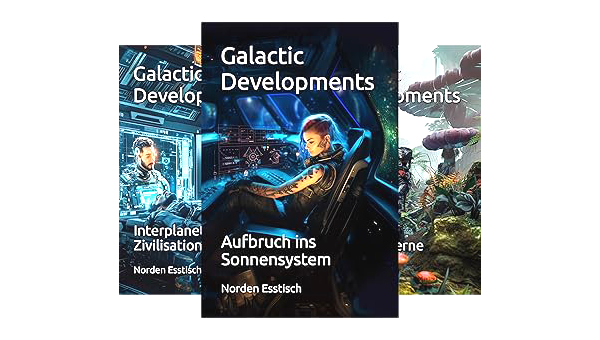
2174 Asteroidenraub: Der größte Diebstahl des Jahrhunderts

Im Jahr 2172 manövriert der Asteroidenentwickler Seren-Enterprises einen kleinen Kometenkern aus einer erdnahen Sonnenumlaufbahn in einen hohen Erdorbit. Der Komet ist 90 Meter groß und enthält neben zwei Millionen Tonnen Wassereis einen außerordentlich hohen Anteil von seltenen Erden. Die Reise dauert 14 Jahre mit Fusionsfackel-Triebwerken, die fast alles Wassereis des Kometen verbrauchen.
Seren-Enterprises beabsichtigt, Rohstoffe für die Industrie im orbitalen Erde-Mond-System abzubauen. Abnehmer sind vor allem L4/L5-Konstuktionen, lunare Produktionsstätten und Forschungsstationen im Erdorbit. Außerdem enthält der Komet verschiedene Edelmetalle, die wie andere Elemente für Produktion und Konstruktion im Orbit verwendet werden, darunter 50.000 Tonnen Gold, das aber nur in kleinen Mengen industriell benötigt wird. Das Projekt läuft unter höchster Geheimhaltung. Der Komet und die Extraktionsanlagen werden unter einer Hülle aus Aluminiumfolie verborgen.
Anfang 2174 wird der Asteroid von gut ausgerüsteten Einheiten unbekannter Herkunft besetzt. Seren-Enterprises wird der Zugang verwehrt. Für zehn Monate begründet Seren die Lieferverzögerung gegenüber Kunden mit operativen Problemen, meldet den Vorgang aber nicht den Behörden.
Ende des Jahres beginnt der sogenannte Goldregen. Die Diebe landen Gold mit Deorbitern in menschenleeren Gebieten und sammeln die Fracht ein. Die nicht registrierten Landungen erregen weltweit die Aufmerksamkeit ziviler und militärischer Behörden. Nach drei Wochen, in denen die Behörden versuchen mit Seren-Enterprises zu verhandeln und Druck auszuüben, versuchen Einheiten der Raumpatrouille auf dem Asteroiden zu landen. Sie stoßen auf starken Widerstand und werden zurückgeschlagen.
Mit Beginn des Landungsversuchs ändern die Entführer ihre Taktik. Sie schießen einen Großteil der Gold-Ladungen ohne Deorbiter unkontrolliert zur Erde, weiterhin in unbewohnte Gebiete. Teile des Goldes verdampfen beim Eintritt in die Atmosphäre. Aber über weite Gebiete kommen kleine und größere Tropfen aus geschmolzenem Gold und Nuggets bis 1 Zentimeter Größe herunter. Es beginnt ein Goldrausch in der Sahara, Alaska, Sibirien und Australien.
Insgesamt landen die Diebe 9.000 Tonnen Gold, davon zwei Drittel unkontrolliert. Das entspricht etwa einem Prozent des damaligen Weltvorrats. Der Welt wird bewusst, dass in Zukunft jede Organisation fast beliebige Mengen Edelmetalle zur Erde bringen kann. Der Goldpreis und viele andere Rohstoffmärkte brechen ein.
Schnell wird bekannt, dass ca. 2.000 Tonnen Gold über Terminkontrakte schon vorher zu den alten Marktpreisen verkauft worden waren, einem Wert, der dem Bruttosozialprodukt eines kleinen Landes entspricht. Später stellt sich heraus, dass der wahre Zweck des Asteroidendiebstahls nicht der Goldverkauf, sondern die Manipulation der Märkte war, bei der die Diebe wohl ein Vielfaches verdient haben.
Im Chaos des Goldregens verlassen die Diebe in Deorbitern den Asteroiden. Ihre Identität bleibt im Dunkeln. Einige Details sprechen für staatliche Akteure. Es gibt viele Spuren und Indizien, aber keine eindeutigen Hinweise. Die wahren Drahtzieher werden nie öffentlich bekannt.
2176 Der Zusammenbruch eines Reputationssystems

Der Zusammenbruch eines der führenden Reputationssysteme yu–rep führt zu bedeutenden Verlusten in der Realwirtschaft.
Die Weltwirtschaft schrumpft um 9%. In den Folgejahren wächst die Wirtschaft um 6% bzw. 4% und kompensiert so den Ausfall. Die von yu-rep ausgelöste Wirtschaftskrise offenbart andere Schieflagen der globalen Wirtschaft, vor allem die Überbewertung von Reputation gegenüber Kapazität und die Zersplitterung der Bewertungsnetzwerke.
Kapazitätssysteme, in denen man reale Produktionskapazitäten abbildet, werden wichtiger, darunter hCap für Endverbraucher-Hardware aller Art, Recap für Fab-Input (Resource-Cap), CRAP für Kreativleistungen, Design und Modellierung, e-cap für Informationsverarbeitung (Eter-basiert). Gegen 2190 schwindet die Bedeutung von Reputationsbewertungen. 2195, fast 20 Jahre nach der Rep-Krise, migrieren mehrere führende Rep- und Cap-Systeme zur qui-Allianz. Während Reputationssysteme dazu tendieren, Verhalten in der Vergangenheit zu bewerten, dominiert bei Kapazitätssystemen der mögliche zukünftige Output.
Die Rep-Cap-Synthese durch qui-Netze erweist sich als stabile Grundlage für das Wirtschaftssystem, stabiler jedenfalls als die bisherigen Ansätze, wie begrenzt verfügbare Stellvertreter (LAP-Währung = Limited Availability Proxy Currency), zentralisierte Buchhaltung mit Fiat-Währungen, verteilte Kryptostreams und reine Reputationssysteme. Mit quiX, dem qui-Exchange, entwickelt sich ein delokalisierter Austausch verschiedener qui-Netze. quiX ist architekturbedingt nicht dominierbar, d.h. keine lokale Macht kann quiX manipulieren. Das ist ein wesentlicher Erfolgsfaktor von qui.
Mehr Aufregende Ereignisse
2174 Asteroidenraub und Goldregen
2190 Alien Mondbasis
2383 Massenflucht von der Erde
2458 Durchbruch
2536 Kollisionskurs
2540 Mukhagni-Zwischenfall
2544 Nachricht des Jahrhunderts
2574 Artu-Domäne
2650 Wundersame Rettung
2721 Spacedom-Tragödie
2791 Fremde Besucher
2794 Prophet der galaktischen Händler
3291 Schockierende Nachricht
3308 Supernova
Neue Beiträge
2158 Space Patrol
2222 Weltraumpiraten
2326 Kein interplanetarer Krieg
3050 Königliche Garde
3090 Solo Ehre
2234 Am Ende des Orbits
2248 Gemini-Katastrophe
2366 Orbitale Ökonomie
2312 Kaio-Artefakt
3361 Erste Menschheit
2333 Metrische Impulsverstärkung
2337 Verschwörung im Orbit
2247 Quantensprung
2284 Trennung der Erde
2321 Isolation der Erde
2205 Unternehmensnationen
2192 Antiexpansionistischer Terror
2179 Private Asteroidenbasis
2231 Vereinte Planeten
2291 Verbotene Forschung
Die Besten
(20 von 75)
2158 Space Patrol
2248 Gemini-Katastrophe
2265 Öko-Militarismus
2333 Metrische Impulsverstärkung
2469 500 Jahre Tranquility
2501 Extraplanetare Forschung
2540 Mukhagni-Zwischenfall
2560 Fakultät für Exotechnologie
2574 Artu-Domäne
2722 Sein Leben für die Kinder
2806 Weltraum Müll
2949 Königin von Marduk
2997 Alien-Religionen im Streit
3010 Wiederbesiedlung Kisors
3050 Königliche Garde
3090 Solo Ehre
3110 Zersplitterung des äußeren Systems
3225 Flux-Manifest
3296 Drachenlegenden
3353 Tor der Kontroverse
 2171
Pandora Artefakt
2171
Pandora Artefakt

 2179
Private Asteroidenbasis
2179
Private Asteroidenbasis